This follows the coattails of my post from yesterday on the Drunk and Disorderly. I noticed some questions from people about Tommy Lynch’s Double Drunk and Disorderly and his Triple Drunk and Disorderly. Affectionately known as the Double D and Triple D. I noticed Mike Schmidt mentioned information sheets from Tommy being at Schulz Outfitters this year could be found. So I leaped into action and asked Mike Schultz about them and he was very gracious and sent me the information. Below you will find Tommy’s tying and fishing explanation of the two streamers. Enjoy!

Rear Hook: Gamakatsu B10S Size 2 – 1
Tail: Schlappen or Whiting American Saddle Hackles
Flash: Polar Flash, Holographic or Regular Flashabou of choice
Rear Body 1: UV Polar Chenille
Rear Body 2: “Skinny Rabbit” 3-4 Wraps
Overwing: Mallard Flank or Guinea Fowl
Connection: AFW Surflon or Rio Powerflex Wire Bite w/ 2-3 6 to 8MM Beads
Front Hook: Gamakatsu JIG 60 Degree Flat Eye RB Size 2/0-4/0
Flash: Polar Flash, Holographic or Regular Flashabou of choice
Front Body 1: Rabbit Wrapped
Front Body 2: UV Polar Chenille
Rattle: Medium Size
Overwing: Mallard Flank or Guinea Fowl
Flash: Polar Flash, Holographic or Regular Flashabou of choice
Front Body 3: Rabbit Wrapped
Collar: Deer Hair
Head: Deer Hair
“Enhancements”: Clear Cure Goo Hydro
Eyes: 3D Eyes glued on using GEL Super Glue
1st Step is the rear hook tie, (any straight eyed 1x to 2x long), 811S TMC or 810 Dairichi, tied with two larger pieces of schlappen tied off back of hook with the insides facing each other, following by a moderate about of flashabou or polar flash that covers half of the feathers.
2nd Step is to add Polar Chenille,(PC), 3/4 up the hook towards the eye, then three raps of bunny just in front of the PC end point, then you add a larger straight flank overall right down the center like a cougar… Whip Finish and move to next hook; you could fish this rear hook by itself, as I have done so and caught fish… BUT NOT THE BIG ONES… So we continue forward to make larger prey for larger predators!
3rd Step is to add the 20-45lb wire connection,(pending the size of your quarry), with 2 to 3 good size beads to create the right gap distance between the hooks; connection should be then tied along the SIDE on to any 3x to 4x downturned eye hook from Dairichi to Owner…. Action results vary by length, hook eye angle, and even steepness of down turned eye. MORE DOWN TURN… MORE DEPTH AND DIG!
4th Step is to add a good amount of Flashabou or Polar Flash in the same color as previous step to cover the gap of the articulation and then down into the second hook an inch or two pending overall length of fly; just in front of this flash, add a few more raps of the bunny for fly mass and gap coverage… varied color optional, and you should limit the amount of raps with all bunny add-ins as it is a soaking material and can affect your bugs action if too much is used.
5th Step is to then use the same PC used in the rear hook, tie it in right in front of bunny, then add and tie in a glass rattle in the appropriate size just in front of that tie down rapping all the way forward, leaving almost half the hook shank exposed; the PC ends up covering the entire rattle and just in front of making for a more durable fly when it comes in contact with harder surfaces when casting… This does however dull the sound of the rattle, but it does add a great amount of body profile in just the right spot!
6th Step is to take two more flanks of less size than the rear hook flank where the mallard sits on top of hook like a Cougar, and lie them on either side of the fly adding depth profile and forward rudder to the fly; with both flanks in, there should be a gap between them on the top and bottom of fly… Add a substantial amount of Flashabou or Polar Flash to the top of the fly so that it covers the gap and the tops of the flanks, but not around the whole fly, (you may also add a red throat at the underside forward of the fly for any bleeding variations with just a little red bou)
7th Step is to collar all of these materials with a longer fibered Zonker, preferably cross cut for this stage of the fly, then, with as much as a full third of hook shank still left, you will begin spinning 3-5 pencils worth of spun deer to make the head buoyant enough to recover and still diver per each strip action you give it. You will need a hair stacker for the first stack of deer because you want to leave the guards very long as they will set the pace for the flies size, water push, action, and direction
8th Step is to finish spinning the deer without the stacker as apposed to the first rap, and up to 4 more stacks before the prescribed amount is settled in; longer deer hair makes this whole process easier especially when working with the larger variations. 1/3 of the forward hook should be covered with Deer uncut at this point and you can choose to mix up the colors per stack or just stay with one color or try and even do some deer blending… The more time you spend on your fly, the less likely you can fish it, pretty as it may be though!
9th Step is sculpting the deer head, spun with just deer skin, for the desired backbone of this entire fly… THE WEDGE!!! This head should end up looking like a “door-stopper” by the time you are done; first trim off most of the material from the underside of the chin and all the way back, even cutting the guard hairs of the original stack, but be careful not to hit the bunny. All adjustments should be done with a sharp razor at this point! Next, trim the top of the fly by trimming short but flat just behind the eye of hook, then ascending all the way up to the guard hairs leaving at least 1/3 of the guard hair exposed before descending down towards the eye. With a sharp pair of hair scissors, square both sides for door stopper for finished shape since both the bottom and top are already set.
10th Step should be with scissors or razor pending the tuning that needs to be done. Again, having a perfect wedge isn’t as key as keeping your material amounts in check. Too little and you loose the wedge action and dive, too much and she will float too high and maybe even spin pending how wide your head is relative to the overall length of fly. Spend some time doing this step and be careful on your angles of cutting due to materials you can’t get back once you do; but once you do, add two Mirage Eyes, one to either side of deer head with a bead of super glue or comparable to lock them in.
11th And Final Step should be the addition of Clear Goo Hydro for the head to make it more durable so it doesn’t come apart during all that aggressive heavy sink tip casting. Add Goo to all four sides of head after you have allowed the super glue to lock up the eyes… Then use the UV Light provided to set the cement for a strong and lasting fly that has “The Moves Like Jagger!” Added bonus to the Clear Goo is the amount of water that is NOT allowed through the head causing even more displacement, and therefore more dig. When goo isn’t on head, the fly can be damaged easily, often materials can start to turn, and it looses some of the added dive potential as water is allowed through the deer head.
Though The Triple D was realized in Arkansas last winter… The Double D Variation, different only by overall size and two pieces of Schlappen, has been in my boat now for several years now and has been just killing trout in the smaller watersheds with regularity, so much so my clients don’t like fishing other bugs unless they can just fish the D & D in a different color. Those that have applied this fly to Pike, Musky, Smallmouth, (all predators in their own right), have done exceptionally well with it. Variations will spring up as a result of the fly, but after fishing it with everything from Marabou to Mallard Flanks… I have found a nice balance in my existing pattern. After the smoke clears your bug will swim and finish each action you give it, never limiting itself to up and down motion of attraction. Triple D ends up swimming around much like a Banjo Minnow in that it’s very neutrally buoyant and able to “Swim Out” each action given to it, and then repositioned for a completely different angle of retrieval, and therefore a different action all together; The Original Double D walks a little different path.
Origins for the Double D were the need to pick locks on the Upper Manistee in short width trenches, but also to add new and neutral actions in and around the logs that seem to house most of the population up there. What I wanted was High Action Fly in a shortened space, and what better example of this than a Rapala, which for some reason still out fishes all my flies to date… But I am working on that! Noticing during my youth, that action of the tipping and yawing the famous crank-bait, I realized that using lead in a fly would never get me to the desired look a Rapala radiates when it “rattles” the water it fishes. Before the Triple, the Double was a great fly minus those couple of length giving feathers that changed the action entirely by parachuting the rear hooks rapid action without it. While fishing the Double D, you can fish it with a short, but sharp strips to get a “Jerk-bait” like action that is likely the most deadly for the commitment factor as it leaves pause and therefore opportunity when it comes to rest neutral in the water column… However, there is another way to give that fly some Chuck & Jive, and that is too slowly lift the rod, just after a two second sink tip drop, and shake the fly WITH THE LINE and not the Rod! This is against most streamer fly retrieval ideas in that lifting normally causes a bug to ascend in the column, but with the wedged head, the side to side shaking of the line and the sink-tips positioning on the down turn eye… Cause & Affect make the fly dig and kick very violently and as it starts its HIGH MOVEMENT, SLOWER RETRIEVE, away from the bank or whatever target; this with a depth that is consistent thanks to the neutral buoyant recovery per shake making it VERY EASY to fish when you want to “Walk The Log”… IT STARTS FLASHING AND TIPPING JUST LIKE A RAPALA when fished right!!! Just what the doctor ordered if you ask me!
Lynch’s Drunk & Disorderlies are allowed to “Swim Out” instead of just being “jigged” again and again for more action; each way you go, it usually does 4 others! Having a wedge causes inconsistent points of recovery because the fly is being pulled from the opposite angle each time you strip, leaving no rhythm or continued direction in its retrieval back to the boat or your person… Hence Drunk & Disorderly. Wedge head provokes a dig, that travels down the sides of the flanks that are vertical on either side of the fly for profile and rudder, this just behind the wedged deer head on a very long shanked hook, which causes a substantial kick that is sent down the train of materials and then through the articulation and into the smaller more manipulated, prescribed smaller hook extension of fly; try not to use equivalent length or larger hooks for the rear on this pattern as the action is lost due to too much material back instead of forward. Design of this fly is based on a forward push through the water that is allowed to recover and steer and then trigger predator fish as its movement is very inconsistent, much like an injured baitfish or other prey. This action is seen in two different ways, per different flies only by a couple of feathers which by itself is pretty cool; but what I have found is that fishing the smaller Double D in medium to smaller watersheds trumps going all in like you would if you through the giant Triple D version in the same water. Typically I save the Triple D, and all variations of it, for the larger Tail-Waters where the average fish may be larger and therefore their prey window following suit. Ranging anywhere from the Micro Double D’s that are only a few inches in length, all the way up to some of the musky variations I tied up and will likely use down in Arkansas for SUPER TOADS, (that are in excess of A FOOT LONG), the mindset you should have when being creative with this fly is THE WEDGE HEAD and whatever train of materials that follows it. If you stay with the downturned eye with a wedge deer cut, the sky is the limit in how you can apply this to any fish or body of water you need a predator to come to terms with your presentation. When you fish it in a larger watershed… Lengthen the leader so to leave a bit more slack in between strips so the fly has a great range of “Swim-Out”… Just the same way you will want to run only a 4-6′ leader in the smaller watersheds to get that immediate depth needed to fish RIGHT OFF THE BANK!
Unlike allot of patterns that leave you wanting to try yet another, which ends up taking way too much time each day when you start adding up all the minutes and miles of water wasted “Trying another color or size”, just use flies that provoke a response instead of asking for one. Most of whom that have fished the fly end up not wanting to fish too much else, and not just because the fish catches fish, BUT BECAUSE IT’S FUN JUST WATCHING THAT BUG WORK THE WATER!!! Faith in the fishery, and confidence, in your fly, will catch more fish than any one fly in your box, and the added bonus to fishing a fly with such movement is you are afforded good fishing often because unlike most other bugs, this bug does most of the work for you, and keeps you interested while it does!
Hope You Have As Much Fun Fishing It As I Have and Do!

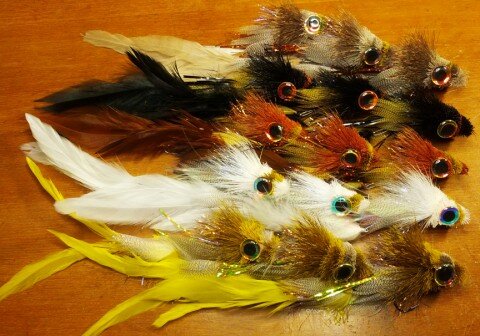





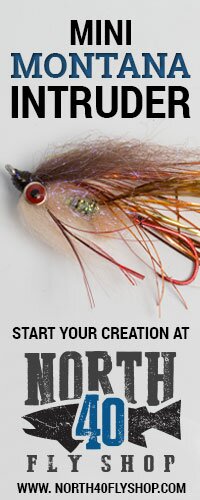
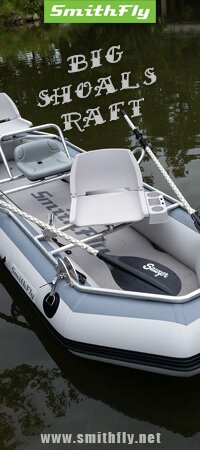


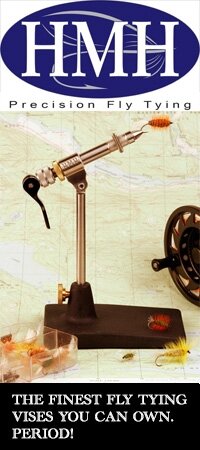


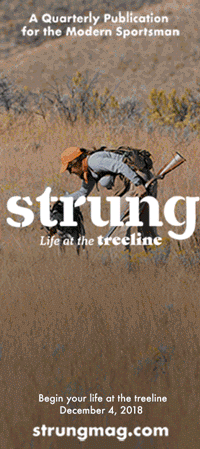



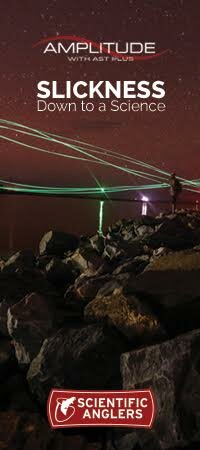
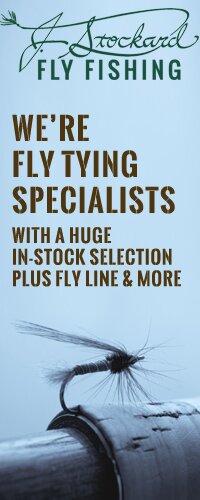


Excellent blog post. Tommy’s flies are awesome, you know they are proven patterns that really work. Thanks